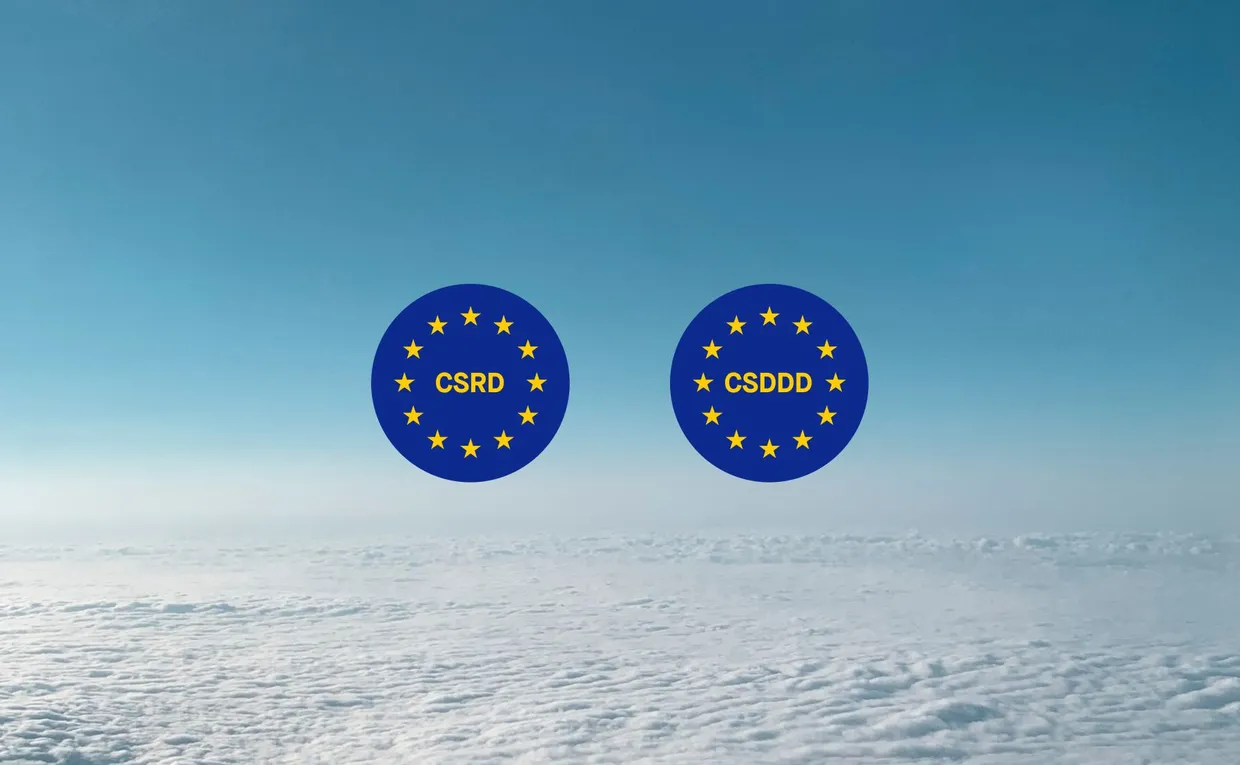Emission factors are a neat little tool for measuring your carbon footprint, without having to crunch lots of data. Here’s everything you need to know about what they are, how they work – and what wetsuits have to do with it.
I’ve been doing a lot of deep sea data diving lately. Cheap pun, but hear me out.
We’ve been working with the active-wear brand Picture Organic Clothing on measuring its carbon footprint. They’re doing some really exciting stuff to lower their environmental impact. For example, by selling wetsuits made out of alternative materials – think oyster powder, limestone and natural rubber. Unlike traditional synthetic neoprene, these materials aren’t based on fossil fuels, so that means lower emissions, and a lighter carbon footprint.
Right?
The reality is often a bit more complex and hard to compute. Maybe the process of making a wetsuit out of oyster powder generates more emissions than making it out of nylon. For example, extracting and refining the raw materials could be more resource-intensive. Or maybe the process of transforming it into a wetsuit is less environmentally friendly.
This is where emission factors come into play. An emission factor helps you calculate how much greenhouse gas such as CO2e is emitted by an activity, such as making, transporting, selling or using a wetsuit. In one single, simple calculation instead of crunching row after row of numbers yourself.
The problem, for Picture Organic and anyone else selling cutting-edge wetsuits, is that nobody has worked out the emission factor yet. Which sent us on a long journey to fix that gap. It’s the perfect example to give you a little masterclass in what emission factors are and how they work.
Let’s take a deep dive together.
What is an emission factor?
An emission factor, in its simplest form, is the magic number that gives you an average of how much greenhouse gas is emitted by a product or a process, such as manufacturing or transportation. So, for example, it’s how much CO2e is emitted for every kilogramme of neoprene that’s made, or per kilometre travelled by the truck that delivers a load of wetsuits to the retailer’s store.
It becomes more complicated when you start to add more parameters. The amount of emissions generated by delivering a load of wetsuits to the store, for example, can differ depending on the type of truck, the size of the truck, how old it is and even whether it travels on paved or unpaved roads.
How do you create an emission factor?
To come up with an emission factor for a product, such as a wetsuit, you’d need to measure the emissions generated at every stage of its life. This is called a life cycle assessment (LCA).
In the case of the wetsuit, the raw material needs to be extracted, transported and transformed into a finished product. This is then transported to Picture Organic’s retail outlet. They sell it and then it’s used by its owner. The owner might clean or mend it. And when the wetsuit is past its usefulness, it might be thrown into landfill or recycled.
Another big question is about what happens right at the start of the wetsuit’s life – land-use change. If you make a wetsuit with natural rubber instead of the synthetic stuff, you need to grow some rubber trees. And if you cut down native forest or plant over wild grassland to grow these trees, then that’s a lot of extra emissions to account for.
Manufacturers carry out LCAs to measure the emissions generated by all these processes and activities, and the results are used to calculate the emission factor.
Where do you find an emission factor, and what do you do with it?
The emissions data from the LCA is crunched down into one report, validated by independent experts and added to huge databases, some set up and owned by governments, others by NGOs and others by private businesses.
All a company would need to do when it’s measuring its carbon footprint (see box below) is to look up the emission factor on a database.
How to use emission factors for carbon footprinting
When you calculate your business’s carbon footprint, you work out how much greenhouse gas is emitted as a result of your activity, whether that’s manufacturing, selling, buying supplies, or just sitting in an office sending emails.
And you do this using the magic carbon equation:
Emission factor x Activity Data = Emissions in tCO2e
In the case of a traditional nylon wetsuit, this could be:
Manufacturing nylon plastic (the emission factor) X 1000 kg of nylon procured (the activity data) = 7 630 tCO2e (the amount of emissions generated)
(And don’t worry, if anything including the word “equation” freaks you out, modern tools like Sweep make these calculations automatic and really easy. No maths degree required.)
So what about that wetsuit?
Smart people all over the world are working out emission factors and sharing them with the world, and companies are starting to create their own LCAs for their products.
I’ve been busy helping our partner Picture Organic with that, doing the research and talking to their suppliers and manufacturers. Piece by piece, we are building custom emission factors where they’re needed. And when they’re ready, anyone at the company – and beyond – will be able to use them to calculate their carbon emissions with one simple data entry.
Our experience shows that collaboration is key for this kind of work. So if you have any information that could help to better understand the impact of a wetsuit, then let me know! We can push that emission factor further together.
Until then, see you on the waves.
Emission factors on Sweep
Want to see emission factors in action? Sweep lets you measure your carbon footprint by plugging into the world’s biggest easy-to-use database of emission factors. You can break each one down into parts, create your own composite emission factors, or take the quickest option and use estimates. And then Sweep does all the calculations for you. Book a demo here.
Photo by Delphine Ducaruge on Unsplash




